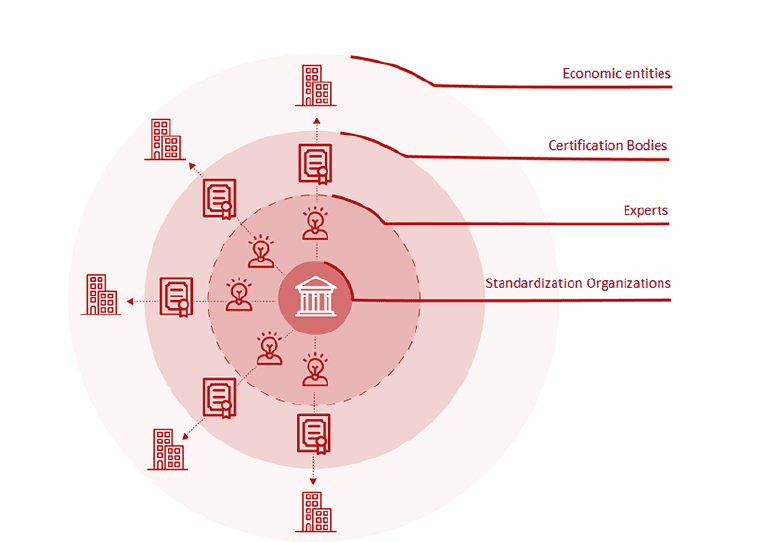
The standardization and certification processes are two complementary mechanisms. Standardization aims to establish standardized practices on a given topic, consolidating them under a universal standard. This work is carried out by independent standardization bodies. In continuation, certification is a procedure whereby certification bodies, as third parties, verify that entities comply with the requirements specified in a given standard. When these two mechanisms are combined, they effectively facilitate the dissemination of best governance practices by maintaining a satisfactory level of compliance over time and striving for continuous improvement. This virtuous cycle lies at the heart of decision-making systems, promoting and catalyzing exchanges among different stakeholders within an ecosystem.

Standardization bodies establish and maintain Standards that are specific and exclusive to the covered subject. Standardization work is conducted with the assistance of technical experts in their respective fields to draft specifications and assessment procedures for these Standards
Beyond this scope, standardization bodies do not provide certification or conformity assessment services.
Indeed, once the specifications and assessment procedures for a Standard are finalized, they are forwarded to duly accredited and/or licensed certification bodies, which are authorized to carry out certification activities in accordance with the established Standard (s). In this capacity, certification bodies, which orbit around standardization bodies, are entrusted with the responsibility of conducting assessments for the certification of third parties to a given Standard. These activities are governed in strict compliance with the standard ISO 17021.

The principle of certification to a specific standard is a mechanism that has stood the test of time. The profession of certifier, which is subject to numerous and rigorous rules, is itself governed by the application of a standard dictated to certification bodies. This Standard is ISO 17021, which outlines requirements for competence, consistency, and impartiality in the context of assessments aimed at certification.
Certification of management systems is an activity involving the evaluation of compliance by third-party certification bodies. Therefore, organizations engaged in this activity are obliged to adhere to the rules and principles of ISO 17021.
All of these rules provide credibility and legitimacy to certification bodies, making certification, when issued, a differentiation tool that offers a competitive advantage.
In an economical and legislative diverse international context, compliance with international financial and non-financial standards represents a trust-building factor for all stakeholders in their collaboration choices. Standardization of these topics allows for uniformity of practices and a shared understanding of strategic issues, with a goal of raising standards across the board. The aim of the standardization process is to provide concrete solutions to a number of issues, including: